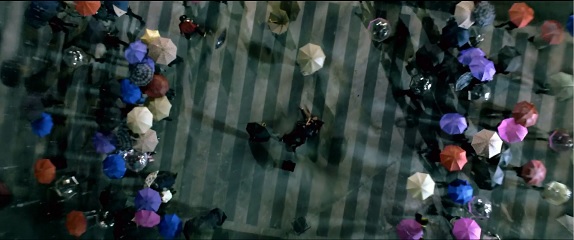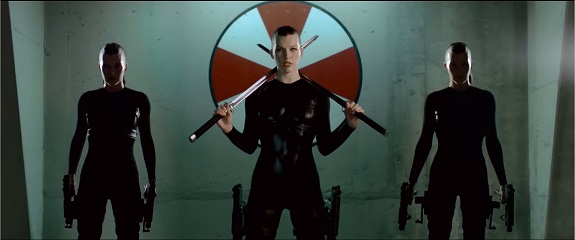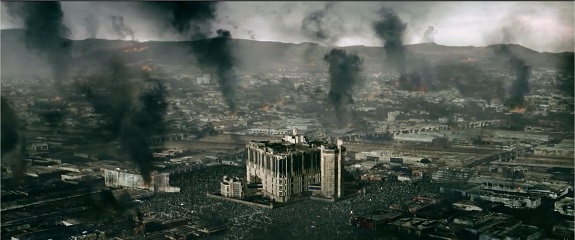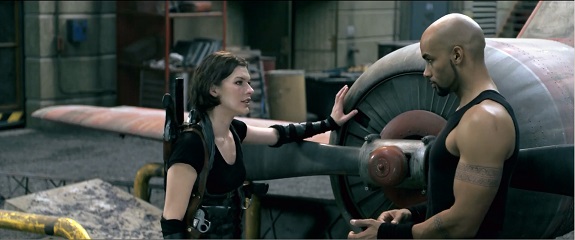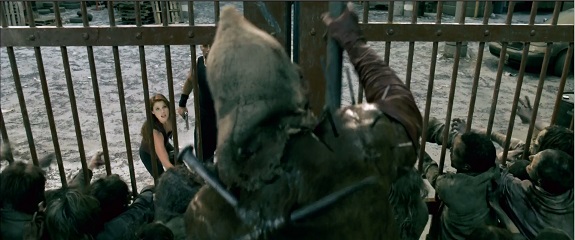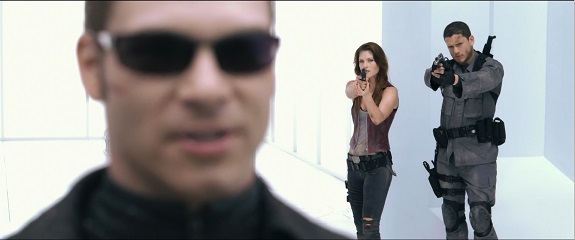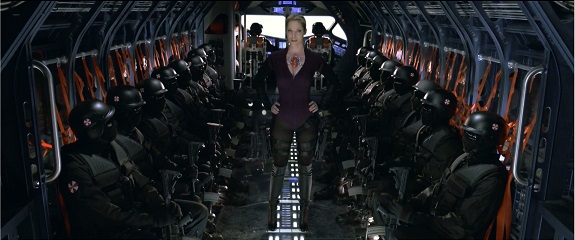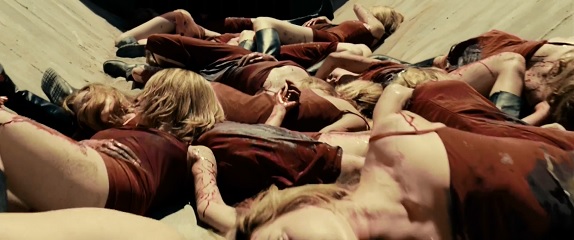
You know, three movies into the franchise and I have to seriously wonder about how seriously the Umbrella Corp takes maximising shareholder value. So far, through their manipulative evil they’ve lost their super duper high sekrit research facility under Raccoon City, then Raccoon City, first overrun by zombies, then nuked to contain the outbreak and now at the start of Resident Evil: Exctinction we’re told the entire planet has been overrun. Society has collapsed, everybody but for a handful of survivors is undead and even the wildlife has been destroyed. So what is Umbrella doing? Staging elaborate tests for their Alice clones to run through and get killed. The end result is that trench full of dead clones. You do have to wonder about their priorities.
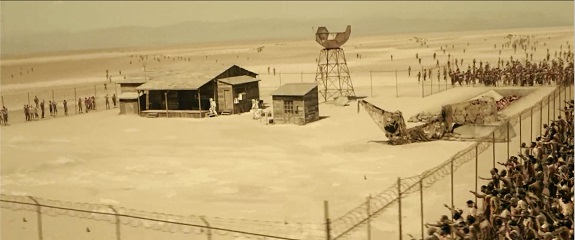
That danger room scenario wastes some seven minutes of an hour and a half long movie, only establishing that the bad guys’ base is in the middle of the desert, which is apparantly all of the US by now and that it’s surrounded by zombies kept at bay only by a flimsy metal chainlink fence. You’d think that the pressed mass of the zombies would’ve been enough to pull it down, but apparantly not. It also raises the question why and when Umbrella has been establishing all those super hight tech underground headquarters. This is in the arse end of nowhere, so they would’ve needed to bring in all sort of equipment and people to build it. For those of us living in cities with years overdue, far more expensive than budgeted metro upgrades, this seems unrealistic.
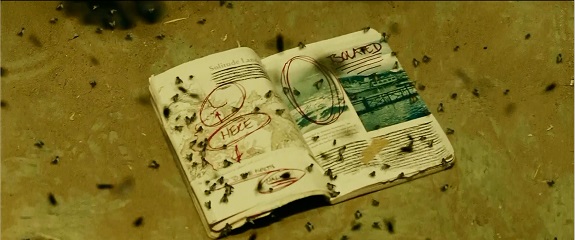
Twenty minutes in, the macguffin driving the plot is introduced, a diary kept by somebody at the gas station that Alice stops at to refuel, after she escaped from the clutches of a hillbilly cannibal clan by introducing them to their zombie dogs. The diary talks about a safe zone in Alaska, free from infection, but the person who made it has hung themselves. Nevertheless, Alice is intriqued.

So it turns out one of the things the bad guys are attempting is to find a (partial) cure for the zombie virus, giving the victims at least some of their intelligence back, curing their craving for flesh and making them into a docile work force for the Brave New World Umbrella wants to create. Needless to say it goes wrong. Needless to say yet another Umbrella scientist will find out first hand why working for Umbrella is a bad career move. It’s the casual psychopathery of the villains that makes you wonder why their mooks keep working for them, rather than just shoot the Umbrella board and lead scientists en masse.
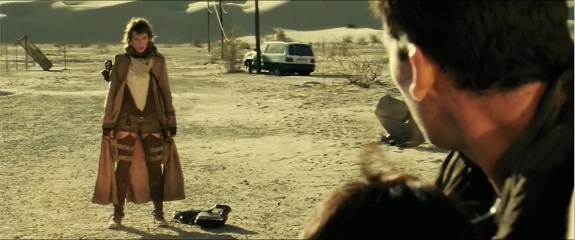
Meanwhile we’ve also been following Claire Renfield and her band of survivors scavenging for supplies, which includes some of the people we met in the second movie, including Carlos here. Alice comes back into their lives as their saviour from an attack by zombified crows, who’ve been feeding on the infected flesh of the dead. It’s the first and only time we see these crow attacks. This is the main weakness of this movie: it’s a series of set pieces that are supposed to overwhelm you with their awesomeness but fall short.
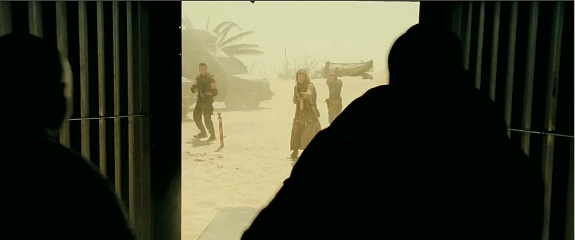
What plot there is, is provided by Alice’s insistence they need to go to Alaska to look for Sanctuary, while the evil Dr Isaacs has become aware of her existence and wants to capture her for study. As the survivors go to Las Vegas for supplies, he sets a trap using his new, improved zombies. This seems wasteful but it’s Umbrella’s M.O. to kill off as many civilians as possible with each of their harebrained schemes. Here the plan is therefore to murder everybody including Alice and then take a blood sample. Things do not entirely go according to plan but it does allow some of the survivors to die a nicely heroic death.
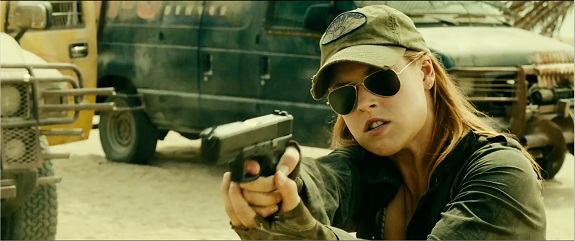
It also allows Claire Renfield/Ali Larter to show off some of her badassery, which was badly needed. In the games she’s one of the more important characters of course and only introducing her in the third movie is a bit late. Interestingly she’s the third badass woman character to tag along with Alice in the movies, after Jill Valentine in the second and Rain Ocampo (Michelle Rodrigues) in the first. Which is I think one of the main virtues of the Resident Evil series in both games and movies, that there are so many strong female characters in it, without too much of the usual nonsense surrounding them.
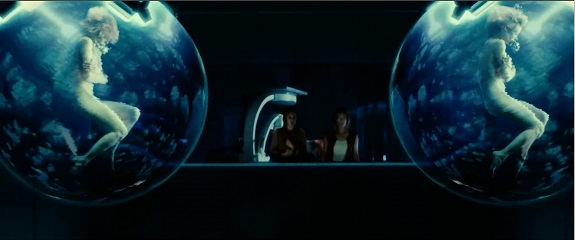
The climax of the movie has Claire and the remaining survivors escape to Alaska in an Umbrella helicopter as Alice fights off the now infected Dr Isaacs, killing him and warning the rest of Umbrella she’ll be paying them a visit. It’s a great image to end on, but it shows the absurdity of the whole series, the obsession it has with Alice. You’d think that after the apocalypse Umbrella would’ve lost some of its arrogance, but apparantly not.
